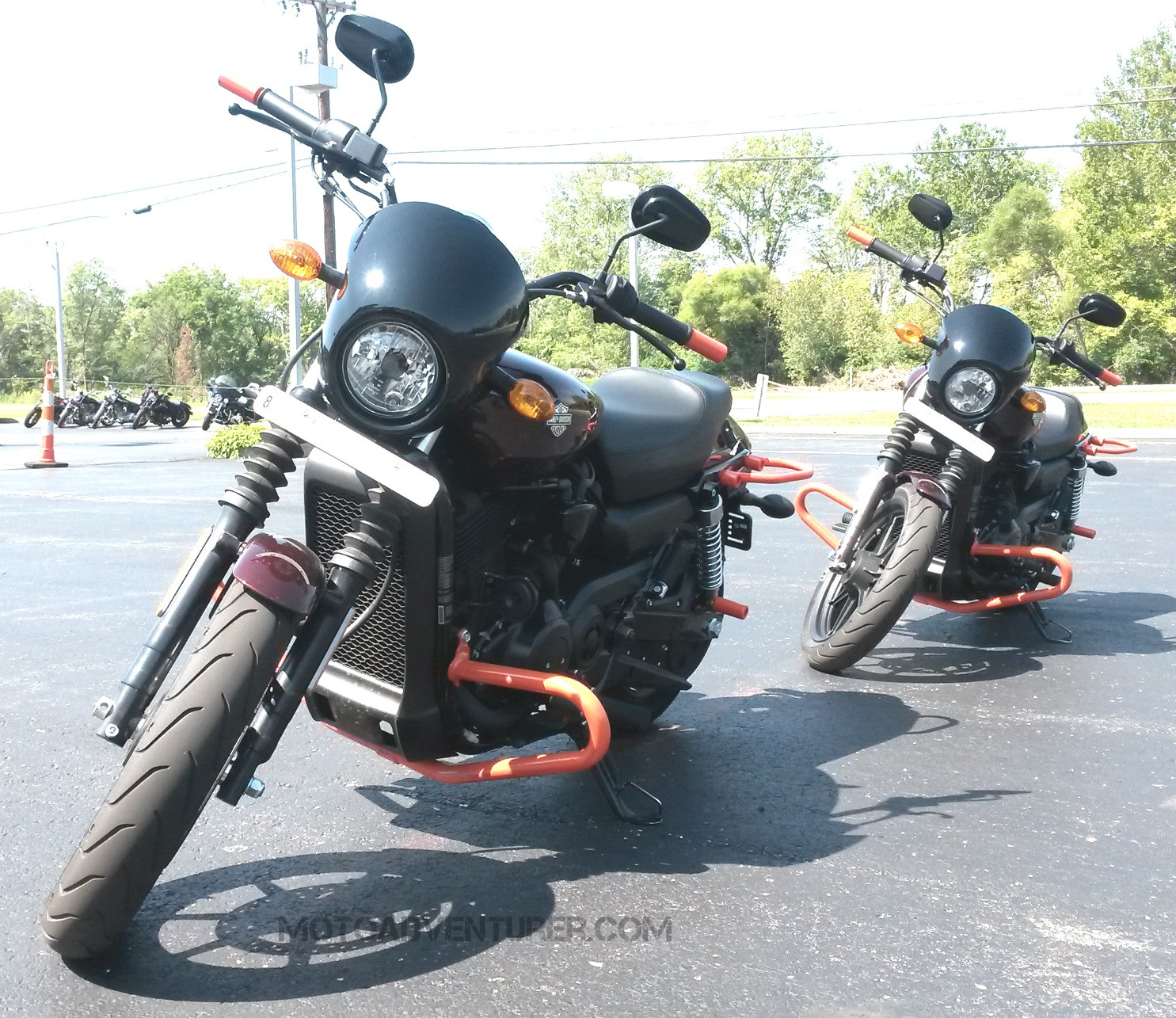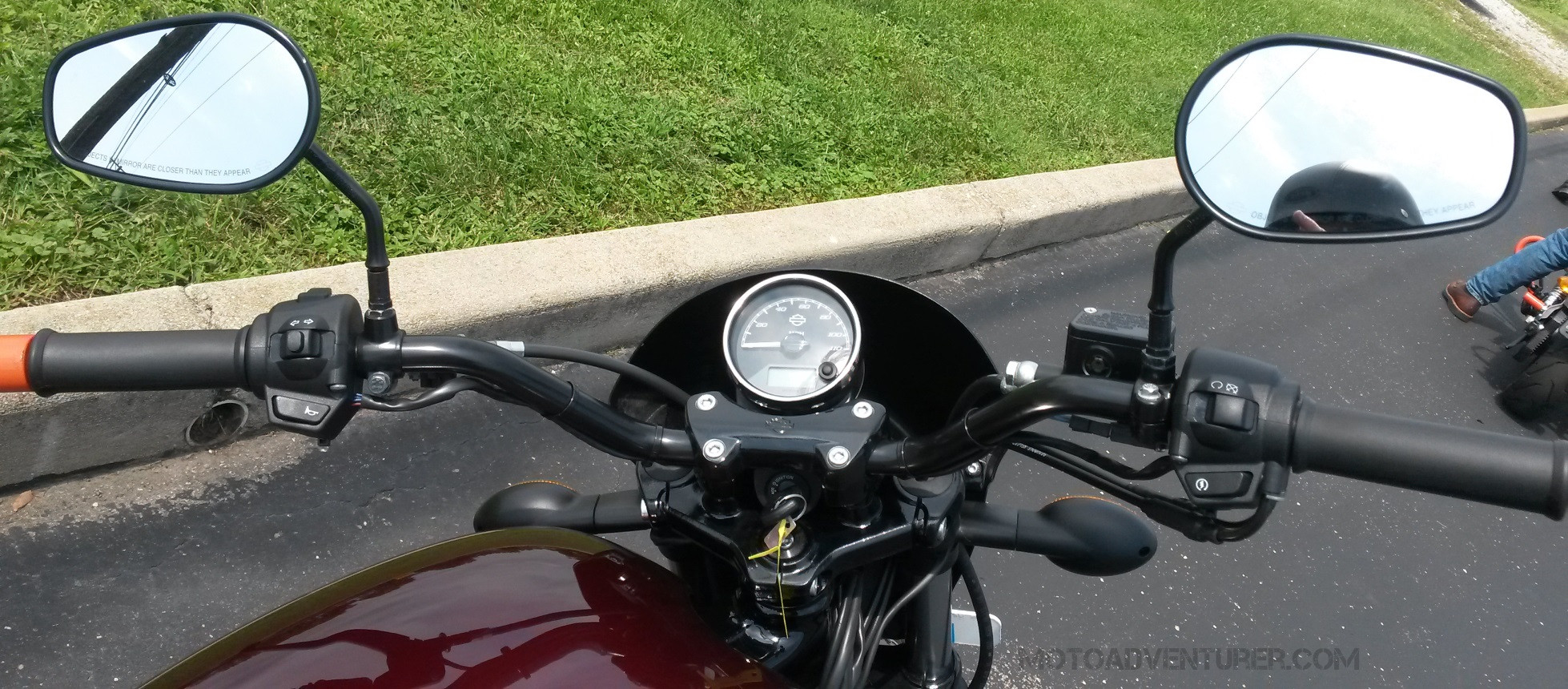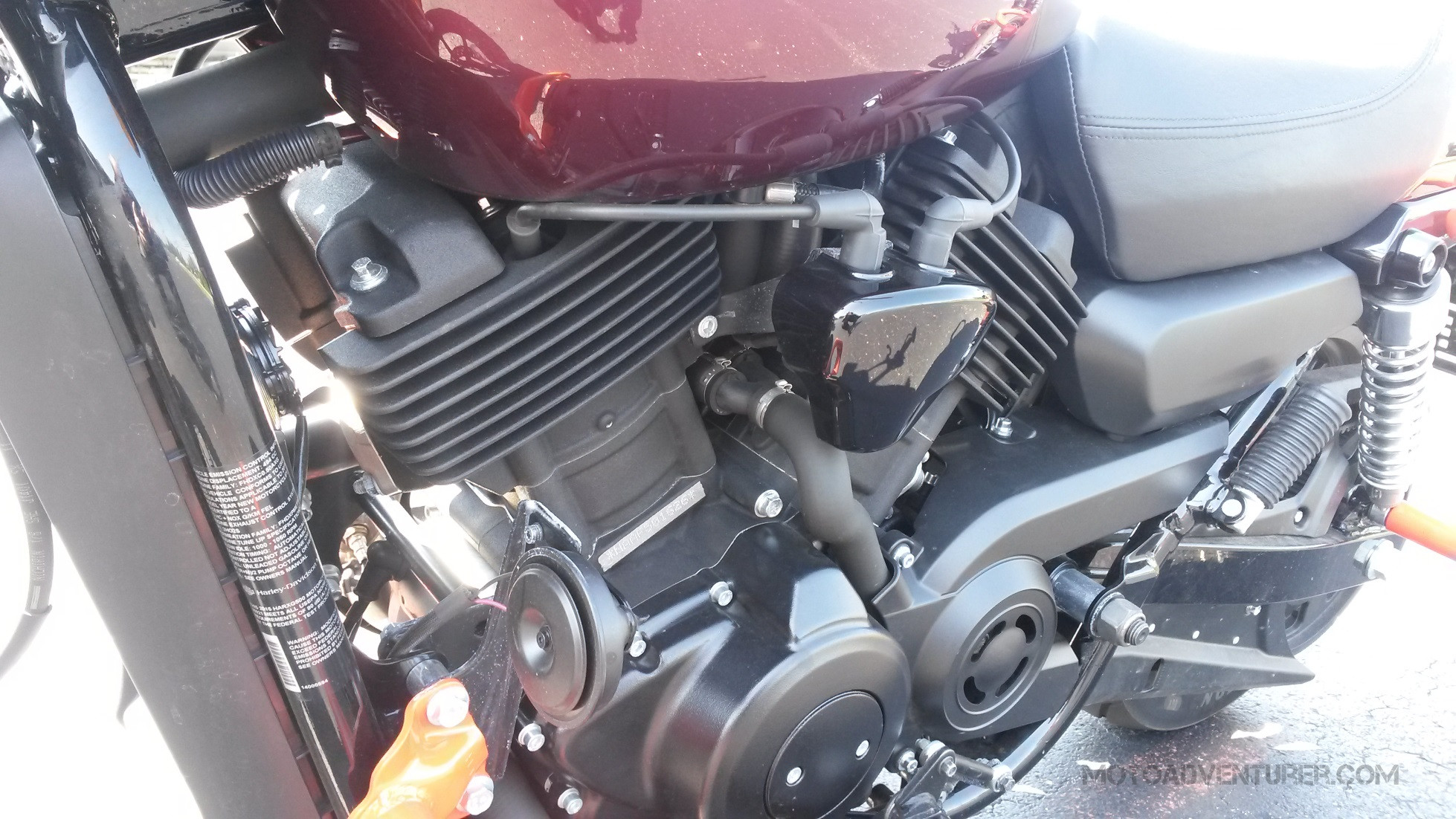Harley Davidson’s commitment to rider education is well-known, exemplified by their Rider Academy and the Basic Rider Course (BRC). Recently, an opportunity arose to experience this firsthand through a free BRC offered to military personnel and veterans. While already a licensed and experienced rider, the prospect of formal training, especially on a new Harley Davidson model, was intriguing. The draw was further amplified by the motorcycle chosen for the Rider Academy’s training fleet: the Harley Davidson Street 500.
The Street 500 marks a significant shift for Harley Davidson. With the discontinuation of Buell, the Street series, including the 500 and 750 models, represents a new direction for the iconic brand. For the Rider Academy, adopting the Street 500 as the standard training bike was a strategic move. For someone approaching this course, the chance to test ride the Street 500 in a controlled environment was a considerable bonus. This review is based on the limited experience within the BRC, offering insights from a non-traditional journalist’s perspective.
Initial impressions of the Street 500 challenge preconceived notions of what a Harley Davidson should be.
 Front view of the Harley Davidson Street 500, highlighting its radiator and overall design.
Front view of the Harley Davidson Street 500, highlighting its radiator and overall design.
Without the badging, it’s plausible that casual observers might not immediately identify the Street 500 as a Harley. The radiator, the 60-degree V-twin engine, and exposed components deviate from the classic Harley aesthetic. This departure could be polarizing, potentially appealing to new riders while unsettling traditional Harley enthusiasts. Personally, this modern approach is refreshing. The Street 500 and 750 suggest an evolution of the Harley Davidson brand, venturing into the entry-level “standard” motorcycle category with mid-controls and upright seating, a contrast to their traditional cruiser lineup.
Beyond the practical orange crash bars fitted for training purposes, the Street 500 retains a discernible Harley Davidson “fit and finish.” While “fit and finish” can be an abstract concept, the Street 500 showcases quality components and attention to detail expected from the brand. Metal accents, robust engine castings, and minimal plastic usage contribute to a sense of value, even in this entry-level offering. The fuel tank design, reminiscent of the Sportster 833 Superlow or 1200, is a particular highlight, enhancing the bike’s curves in a way the classic Sportster “peanut” tank arguably does not. The “tall” seat option, chosen for the BRC, proved comfortable, even for a rider of average height (5’10”). The seat’s substantial padding surpassed expectations, especially compared to stock seats on similar motorcycles. Even at low speeds within the training course, the suspension felt compliant, although a more thorough assessment would require diverse riding conditions. The inclusion of a belt drive is a notable feature for a motorcycle in this price range, often uncommon in its class where chain drives are standard. Michelin Scorcher 11 tires, a departure from Harley’s usual Dunlop preference, were another positive surprise. Fork gaiters and the headlight cowl add to the visual appeal, hinting at the Street 500’s potential for customization into a contemporary cafe racer.
However, the Street 500 does present some elements that diverge from traditional Harley Davidson expectations, beyond the liquid-cooled engine. Plastic components are present, and while not inherently negative, their execution can impact the perceived quality of a motorcycle.
 Close-up of the Harley Davidson Street 500 mirrors, showing their standard Harley design and placement.
Close-up of the Harley Davidson Street 500 mirrors, showing their standard Harley design and placement.
While Harley has managed plastic integration reasonably well compared to competitors, the right side cover appears somewhat basic. Traditional Harley riders might also find fault with the turn signal switch – a conventional, non-canceling, left handlebar-only type common on many other brands. The engine cut-off switch, black and operating horizontally, also deviates from typical conventions of a red, vertically actuated kill switch. Mirror placement was another minor drawback, offering a limited rear view obstructed by the rider’s shoulders. A more significant concern was the cable routing on the exhaust side. While exposed wiring is not unexpected on smaller motorcycles, the main wiring bundle appeared somewhat haphazardly placed. It’s worth noting that the Rider Academy’s Street 500s were early production models, potentially explaining some of these minor imperfections.
 Revolution X engine of the Harley Davidson Street 500, showcasing its liquid-cooled design.
Revolution X engine of the Harley Davidson Street 500, showcasing its liquid-cooled design.
The true strength of the Street 500 lies in its Revolution X engine. This 500cc powerplant is surprisingly responsive and energetic for a motorcycle in its class. Compared to smaller displacement scooters and even larger displacement bikes, the Street 500 feels notably peppy. The exhaust note is also commendable. Despite being liquid-cooled and overhead cam, it retains a hint of the classic Harley Davidson rumble, complemented by a subtle air intake whistle. Unlike some other modern V-twins, the overhead cam noise on the Street 500 is minimal. The instrument cluster is another positive aspect, featuring a speedometer with integrated turn signal indicators, similar to some classic cruisers. While a tachometer is absent, which is typical for entry-level bikes, the overall chassis feels compact, contributing to agile handling, ideal for urban riding.
Overall, the Harley Davidson Street 500 exceeded expectations. Dismissing it solely as an “entry-level” bike does a disservice to its capabilities. Considering that 650cc motorcycles were once considered large displacement machines, and many superbikes fall in the 600cc range, the Street 500 offers a compelling package. While initial assumptions might categorize it as a basic beginner bike, its performance dispels this notion. The Street 500 is nimble, surprisingly torquey, and refined for its price point. Given that the primary difference between the 500 and 750 models is bore size, the Street 750 appears to be an even more enticing option, potentially serving as an excellent foundation for a modern, retro-inspired cafe racer project.

